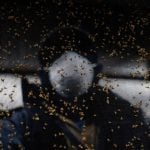Prior to crisis, only a handful of Canadian scientists were researching diseases caused by protein folding — today there are dozens, with many working in Alberta
There’s no denying BSE was devastating for the cattle industry in Alberta. Yet out of every misfortune, there are positive developments.
“It was a terrible event with terrible consequences for the industry and many families,” said Kevin Keough, executive director of the Alberta Prion Research Institute (APRI). “But some of the things that came from it made things better than before.”
The BSE crisis a decade ago led Canada, and Alberta in particular, to create a strong research community that is investigating bovine spongiform encephalopathy and other prion-folding diseases — a development celebrated recently at a small commemorative event at the Centre for Prion and Protein Folding Diseases at the University of Alberta.
Read Also

Grazing ‘sweet spot’ boosts pasture performance
Timing-focused approach to pasture management touted to boost forage growth, livestock gains while also cutting farmer labour and inputs
“In 2003, there were probably about five people in Canada who would be classified with a high degree of scientific knowledge of prions,” said Keough.
Today, there are now dozens of researchers in Canada working on prions, including at APRI, which was created by the government of Alberta in 2005. The institute has helped the province recruit 11 prion research scientists, who now work throughout the province, and develop two prion laboratories — the University of Alberta’s centre and a prion research laboratory at the University of Calgary veterinary college. Over 300 technicians, students, and graduate students have been employed in the prion research laboratories in Alberta since 2003.
“We have created the capacity we were asked to create,” said Keough. “We have created a world-class environment, international leadership and we have encouraged interdisciplinary research and have developed research and industry collaborations.”
“This allows us to now push through a pipeline of experiments to deal with prions,” added David Westaway, the director of the U of A centre. “We didn’t have this capability before.”
Shirley McClellan, who was provincial agriculture minister in May 2003 when the first confirmed case of BSE was discovered in Alberta, was singled out for her role in the initiative by John Knapp, the deputy minister of Alberta Agriculture.
“Shirley’s vision, her steadfastness, and, above all else, that iron determination was what helped so many of us in this room to do the work in the trenches that we needed to get through this,” he said.
The BSE crisis brought people together from government, universities, and the beef sector, he said.
“There is one takeaway in this — it was the worst of times, but it brought out the best in all of those who were engaged,” said Knapp.
“This has enabled and engendered a direction of inquiry that has not only made us a world centre of renown for research, but is going to make a lasting contribution to both the animal and human side of the equation that future generations will look back on.”















